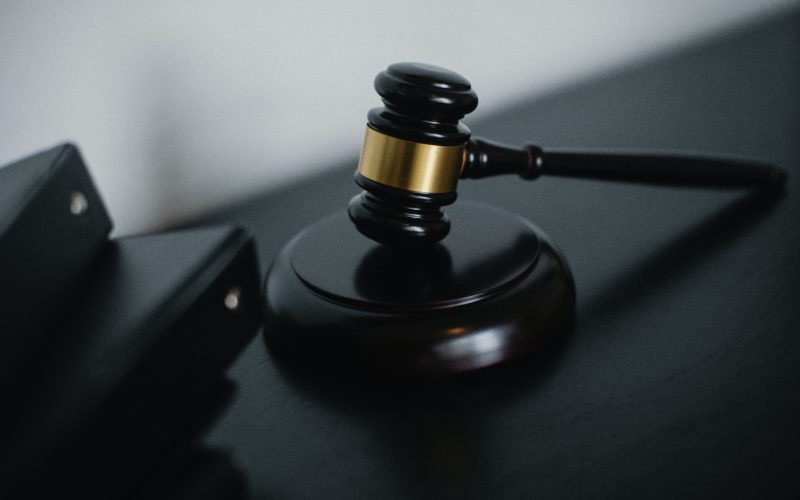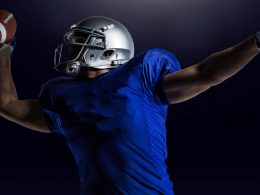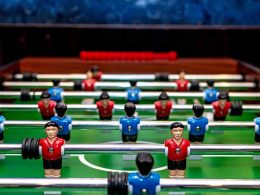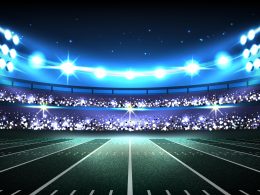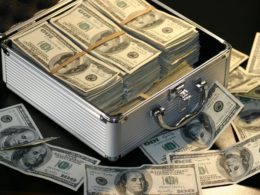Professional athletes’ violations of criminal law are complicated due to the dual systems of punishment faced from both their sports leagues’ disciplinary authority and the criminal justice system, respectively. In the era prior to the domination of news media, league rules were not tailored to uniquely deal with athlete misconduct, leaving this duty solely to the judicial system.1[1]David Ray Papke, Athletes in Trouble with the Law: Journalistic Accounts for the Resentful Fan, 12 Marq. Sports L. Rev. 449 (2001) https://scholarship.law.marquette.edu/sportslaw/vol12/iss1/16 However, at the turn of the digital age, many sports leagues modified their internal rule structure to deal with criminal conduct more effectively and coherently, working in tandem with the criminal justice system and its virtues. With intrusive news media exposing athlete misbehavior in a way never done before, paired with new information distribution technology, social media and fan attentiveness, leagues were slowly forced to deal with negative press and public image head on. Due to this change, rule modification has, over time, been carefully constructed to enable leagues and their constituents to function more like governing bodies, able to deal with all matter of issues as they arise.
This article will delve into the modern formation of two of the largest revenue-generating sports leagues in the United States, the NBA and the NFL2[2]Gouch, Christina, National Basketball Association Total League Revenue from 2001/02 to 2019/20, Statista (Feb. 17, 2021); Gouch, Christina, Total Revenue of the National Football League 2001-2019, Statista (Oct. 9, 2020). https://www.statista.com/statistics/193457/total-league-revenue-of-the-nfl-since-2005/ https://www.statista.com/statistics/193467/total-league-revenue-of-the-nba-since-2005/ , and how their personal conduct policies deal with and discipline players who commit crime. These two systems starkly contrast one and other and may provide insight into the future of collective bargaining agreement (“CBA”) structure. This comparison poses the central question of our exploration: What options do CBA’s provide professional sports leagues and their franchises when certain player misconduct occurs?
League Collective Bargaining Agreement Compositions
Both the NBA and NFL CBAs provide for a direct disciplinary response to player criminal conduct.3[3]National Basketball Association, 2017 Collective Bargaining Agreement, §6.17 (2021). https://nflpaweb.blob.core.windows.net/website/PDFs/CBA/March-15-2020-NFL-NFLPA-Collective-Bargaining-Agreement-Final-Executed-Copy.pdf; National Football League, 2016 Personal Conduct Policy, (2021). https://static.nfl.com/static/content/public/photo/2017/08/11/0ap3000000828506.pdf These sections considerably differ from one and other, with notable differences in: (1) the point in the criminal law process in which the league can decide to utilize disciplinary action; and (2) the league’s internal process for disciplinary investigations and punishments.
The NBA CBA prohibits franchises from disciplining players “solely on the basis that they have been arrested.”4[4]National Basketball Association, 2017 Collective Bargaining Agreement, §6.15 (2021). https://nflpaweb.blob.core.windows.net/website/PDFs/CBA/March-15-2020-NFL-NFLPA-Collective-Bargaining-Agreement-Final-Executed-Copy.pdf Upon conviction, there is no specific time frame provided for the minimum or maximum length of a league suspension, except in limited circumstances.5[5]Id. The only specific requirement that exists regards conviction, plea of no contest, or plea of nolo contendere to a violent felony, where § 6.15 of the NBA’s CBA establishes a 10-game minimum.6[6]Id. at § 6.17. Under a plea of no contest, nolo contendere, or the dropping of charges due to lack of evidence regarding a nonviolent felony, § 6.8(b) sets out a separate league process where the player meets with an independent league counselor selected by the NBA Players Association, who then advises the league commissioner on further action regarding disciplinary action.7[7] Id. at § 6.8(b). The NBA’s Commissioner determines the length of all player suspensions, with guidelines set out in Article 24 of the NBA League Constitution.8[8] National Basketball Association, 2021 Constitution and By-Laws, art. XXIV (2021). https://ak-static.cms.nba.com/wp-content/uploads/sites/4/2018/10/NBA-Constitution-By-Laws-October-2018.pdf
By contrast, the NFL implemented its own version of a player conduct policy in its 2007 CBA revision.9[9]Quinn, Kevin G., Getting to the 2011-2020 National Football League CBA, The Free Library (May 1, 2012). https://www.thefreelibrary.com/Getting+to+the+2011-2020+National+Football+League+collective…-a0323349962 This policy received another significant amendment in 2016.10[10]National Football League, 2016 Personal Conduct Policy, (2021). https://static.nfl.com/static/content/public/photo/2017/08/11/0ap3000000828506.pdf The NFL expanded on the requirement of the NBA, enabling punishment of any player “subject to disposition of a criminal proceeding” or simply for being engaged in such “prohibited [criminal] conduct”.11[11]Id. Article 46 of the CBA allows the commissioner to punish a player who engages in “conduct detrimental to the integrity of, or public confidence in, the game of professional football.”12[12]National Football League, 2020 Collective Bargaining Agreement, art. XLVI §1(a) (2021). https://nflpaweb.blob.core.windows.net/website/PDFs/CBA/March-15-2020-NFL-NFLPA-Collective-Bargaining-Agreement-Final-Executed-Copy.pdf The NFL maintains a Compliance Department specifically for determining punishment substance and length for violations, whose purpose and rules are also set out by Article 46 of the league CBA.13[13]National Football League, 2020 Collective Bargaining Agreement, art. XLVI (2021). https://nflpaweb.blob.core.windows.net/website/PDFs/CBA/March-15-2020-NFL-NFLPA-Collective-Bargaining-Agreement-Final-Executed-Copy.pdf
The NFL has a lesser requirement than the “conviction” standard set forth by the NBA, allowing player discipline in situations even where there is no finding of criminal liability. The NFL itself does not initiate investigations into criminal arrests, convictions, or conduct violations. League investigations of this nature must be initiated by either franchises or players, not by the NFL.14[14]National Football League, 2016 Personal Conduct Policy, (2021). https://static.nfl.com/static/content/public/photo/2017/08/11/0ap3000000828506.pdf
Issues in the NBA System: Sit-and-Wait Periods
On November 15, 2020, Kevin Porter Jr., shooting guard for the Cleveland Cavaliers, (“Cavs”) was arrested in Mahoning County, Ohio, following an incident where he flipped his 2019 Mercedes SUV on a Cleveland interstate with a firearm and marijuana found inside the vehicle. He faced one felony count of improper handling of an illegal firearm, one misdemeanor count of marijuana possession, and one misdemeanor count of operating a motor vehicle without a license.15[15]Windhorst, Brian, Cleveland Cavaliers’ Kevin Porter Jr. Sees Charges Dropped from November Arrest, ESPN (Dec. 20, 2020). https://www.espn.com/nba/story/_/id/30539792/cleveland-cavaliers-kevin-porter-jr-sees-charges-dropped-november-arrest Subsequently, the Cavs acted quickly in removing Porter Jr. from all team workouts, activities, and games while he awaited jury trial. The team cited Porter Jr.’s reason for departure as “mental health-related,” not addressing his pending charges or history of quarrels with Cavs teammates, coaches and front-office officials.16[16]Justice, Camryn, Cavaliers Looking to Part Ways with Porter Jr. After Reported Confrontation with GM Koby Altman, News 5 Cleveland (Jan. 18, 2021). https://www.news5cleveland.com/sports/basketball/cavaliers/cavaliers-looking-to-part-ways-with-porter-jr-after-reported-confrontation-with-gm-koby-altman On December 17, 2020, before a grand jury, the ex-USC star saw all three of his charges dropped.17[17]Windhorst, Brian, Cleveland Cavaliers’ Kevin Porter Jr. Sees Charges Dropped from November Arrest, ESPN (Dec. 20, 2020). https://www.espn.com/nba/story/_/id/30539792/cleveland-cavaliers-kevin-porter-jr-sees-charges-dropped-november-arrest After over a month of inactivity, on January 20, 2021, the Cavs traded Porter Jr. to the Houston Rockets for a 2028 2nd-round draft pick.18[18]Cavaliers Trade Kevin Porter Jr. to Houston, Cavs.com (Jan. 22, 2021). https://www.nba.com/cavaliers/releases/porter-jr-trade-210122
Considering this knowledge of the NBA’s policy, a possible reason for the Cavs response to the Kevin Porter Jr. situation becomes clear: Due to CBA provisions, the Cavs and NBA could not punish Porter Jr. while he awaited trial. Despite this, the Cavs still desired to remove the player from their franchise in the interim, thus placing both parties in a sit-and-wait game. Instead of outright inactivity, the Cavs opted to withdraw Porter Jr. for mental health evaluation, removing the player while seeking to ensure his psychological safety as well as the potential safety of their team locker room. Removal of a player from team activity for mental health evaluation is enabled by Article 22 of the NBA CBA.19[19]National Basketball Association, 2017 Collective Bargaining Agreement, Art. XXII (2021). https://ak-static.cms.nba.com/wp-content/uploads/sites/4/2018/10/NBA-Constitution-By-Laws-October-2018.pdf Porter Jr. has a recorded history of mental health illness which has plagued his playing career; therefore, this was likely a responsive and proactive means for dealing with his situation.20[20]Ibarolla, Kriel, Kevin Porter Jr.’s Troubled Past Well Before Locker Room Outburst with Cavs Leading to Rockets Trade, Clutch Points (Jan. 22, 2021). https://clutchpoints.com/kevin-porter-jr-s-troubled-past-well-before-locker-room-outburst-with-cavs-leading-to-rockets-trade/ However, from the outside, this appears as a daunting public relations issue. Without the knowledge provided here, it would be impossible to know what unfolded behind the scenes. Under an alternative set of similar circumstances, with no other means of resolution (like Article 22) available, NBA franchises are forced to hold steady, sit their player, and wait for the legal process to play out.
Issues in the NFL System: Over-policing and Elliott v. National Football League
The NBA’s dealing with the Kevin Porter Jr. situation stands in contrast to the application of the NFL’s criminal conduct rules. On August 11, 2017, the NFL concluded a year-long Compliance Department investigation into Ezekiel Elliott, running back for the Dallas Cowboys. The league suspended Elliott for the first six games of the 2017 season for violating the CBA’s “personal conduct-criminal conduct” policy revision, as per the 2016 CBA amendment.21[21]NFL Players Union Sues League Over Ezekiel Elliott’s 6-game Suspension, NBC Sports Philadelphia (Sep. 1, 2017). https://www.nbcsports.com/philadelphia/philadelphia-eagles/nfl-players-union-sues-league-over-ezekiel-elliottxfs-6-game-suspension This suspension stemmed from accusations of domestic violence on five separate occasions.22[22]Id. Elliott was never arrested or charged with any crime.23[23]Id.
This spawned the infamous Nat’l Football League Players Ass’n on behalf of Elliott v. Nat’l Football League lawsuit.24[24]Nat’l Football League Players Ass’n on behalf of Elliott v. Nat’l Footbal League, No. 4:17-CV-00615, 2017 WL 4124105, at *1 (E.D. Tex. Sept. 18, 2017) Elliot aimed to challenge the league’s arbitration process, claiming that it robbed him of fundamental fairness by enabling the withholding of relevant, critical information to his situation.25[25]Brinson, Will, Ezekiel Elliott Sues the NFL, Claims a ‘Conspiracy’ to ‘Hide Critical Information’, CBS.com (Sep. 1, 2017) https://www.cbssports.com/nfl/news/ezekiel-elliott-sues-the-nfl-claims-a-conspiracy-to-hide-critical-information/ This lawsuit generated a multitude of public relations press issues for Elliott, the Cowboys organization, the NFL Players Association, and the league. Elliott appealed his suspension to the United States Court of Appeals for the Second Circuit, holding him off the field for an additional three months.26[26]Id.
The appeal between Elliott and the NFL focused on whether Compliance Department arbitrator Harold Henderson acted lawfully in upholding Commissioner Goodell’s reasoning in supporting the accusations made against Elliott.27[27]NFL Players Union Sues League Over Ezekiel Elliott’s 6-game Suspension, NBC Sports Philadelphia (Sep. 1, 2017). https://www.nbcsports.com/philadelphia/philadelphia-eagles/nfl-players-union-sues-league-over-ezekiel-elliottxfs-6-game-suspension Elliott argued that fundamental fairness should compel courts to vacate arbitration decisions based on potentially flawed investigations.28[28]Nat’l Football League Players Ass’n at *5. Specifically, Elliott argued that the conclusion reached by the NFL director of investigations, Kia Roberts, should have been in the submitted investigative report. Roberts had concluded that Elliott’s accuser “was not credible in her allegations of abuse.”29[29]Hardy, Sarah, A Comprehensive Timeline of Ezekiel Elliott’s Domestic Violence Case, SB Nation (Nov. 30, 2017) Like several players before him, Elliott was ultimately unable to convince the federal appellate court to read process rights into Article 46 of the CBA.30[30]Id. The wording of Article 46 awards the commissioner and league committee conduct office considerable discretion to investigate, punish, and review potential player crime.31[31]National Football League, 2020 Collective Bargaining Agreement, art. XLVI (2021). https://nflpaweb.blob.core.windows.net/website/PDFs/CBA/March-15-2020-NFL-NFLPA-Collective-Bargaining-Agreement-Final-Executed-Copy.pdf In the future, the NFLPA and the league may seek to amend the Article 46 list to outline certain protections to players in Elliott’s position.
Conclusion
In the NBA, the league office is cautious in its self-restraint from premature punishment in the face of potentially criminal violations, only allowing a suspension when faced with a criminal conviction. NBA CBA drafters decided on a system based on “moral character” mimicking that of society at large.32[32]Id. All are innocent until proven guilty, with restraints placed on teams and the league from inducing punishment before the individual’s completion through the criminal justice system.33[33]Id. at 577. This mirrors the “right to a fair trial” from the 6th Amendment.34[34]U.S. Const. amend. XI. Critics of this system believe that protections to the extremity of the Constitution are not necessary in privatized sports business.35[35]David Ray Papke, Athletes in Trouble with the Law: Journalistic Accounts for the Resentful Fan, 12 Marq. Sports L. Rev. 449 (2001) https://scholarship.law.marquette.edu/sportslaw/vol12/iss1/16 Additionally, this moves responsibility (and potentially, blame) in making punishment decisions away from the league, most often placing this duty in the hands of the American judiciary. In this light, a private, professional league should not place its disciplinary decisions almost solely in the hands of an external party. While the American criminal justice system is ostensibly neutral, it does not have a specific interest in the NBA or its community and does not allow for conviction-less punishment as the league may see fit.
In the NFL, a system of private policing provides a direct means of conflict resolution which bypasses the criminal justice system. This allows the league to directly address the perceived needs of its community without additional police involvement.36[36]Janine Young Kim, Matthew J. Parlow, Off-Court Misbehavior: Sports Leagues and Private Punishment, 99 J. Crim. L. & Criminology 588 (2008-2009). https://sportsconflict.org/wp-content/uploads/2014/04/Off-Court-Misbehavior-Sports-Leagues-and-Private-Punishment.pdf While in most scenarios, this can remove the drawn-out media and public relations issues which arise when dealing with potential player crime, critics of this system believe this opens the league to the possibility of “acting too soon” and punishing a player before criminal conduct is confirmed.37[37]Id. at 578. Alternatively, this system enables punishment of conduct short of that which enables criminal conviction. Here, conduct which violates social norms can also be punished as the league sees fit.
When placed in direct comparison to the NBA, this system is superior. The NFL CBA provides a freedom and flexibility of actions in dealing with player crime which provides more routes towards reaching a league-preferred solution. As sports leagues progress into the 2020’s, the NFL and NBA systems continue to provide unique and contrasting frames of reference. Should CBA writers focus on selecting one system or the other, based on whichever framework and its corresponding values they believe most effectively fits with their league and its mission? Or should all leagues work to build in the model of the NFL, which formulated a model of league empowerment which enables the direct control over players employment terms and conditions?
Written by: Skyler Jordan Sands and Michael Terlizzi
Skyler and Michael are 2023 J.D. Candidates at Brooklyn Law School
1 David Ray Papke, Athletes in Trouble with the Law: Journalistic Accounts for the Resentful Fan, 12 Marq. Sports L. Rev. 449 (2001) https://scholarship.law.marquette.edu/sportslaw/vol12/iss1/16
2 Gouch, Christina, National Basketball Association Total League Revenue from 2001/02 to 2019/20, Statista (Feb. 17, 2021); Gouch, Christina, Total Revenue of the National Football League 2001-2019, Statista (Oct. 9, 2020). https://www.statista.com/statistics/193457/total-league-revenue-of-the-nfl-since-2005/ https://www.statista.com/statistics/193467/total-league-revenue-of-the-nba-since-2005
3 National Basketball Association, 2017 Collective Bargaining Agreement, §6.17 (2021). https://nflpaweb.blob.core.windows.net/website/PDFs/CBA/March-15-2020-NFL-NFLPA-Collective-Bargaining-Agreement-Final-Executed-Copy.pdf; National Football League, 2016 Personal Conduct Policy, (2021). https://static.nfl.com/static/content/public/photo/2017/08/11/0ap3000000828506.pdf
4 National Basketball Association, 2017 Collective Bargaining Agreement, §6.15 (2021). https://nflpaweb.blob.core.windows.net/website/PDFs/CBA/March-15-2020-NFL-NFLPA-Collective-Bargaining-Agreement-Final-Executed-Copy.pdf
5 Id.
6 Id. at §6.17
7 Id. at § 6.8(b)
8 National Basketball Association, 2021 Constitution and By-Laws, art. XXIV (2021). https://ak-static.cms.nba.com/wp-content/uploads/sites/4/2018/10/NBA-Constitution-By-Laws-October-2018.pdf
9 Quinn, Kevin G., Getting to the 2011-2020 National Football League CBA, The Free Library (May 1, 2012). https://www.thefreelibrary.com/Getting+to+the+2011-2020+National+Football+League+collective…-a0323349962
10 National Football League, 2016 Personal Conduct Policy, (2021). https://static.nfl.com/static/content/public/photo/2017/08/11/0ap3000000828506.pdf
11 Id.
12 National Football League, 2020 Collective Bargaining Agreement, art. XLVI §1(a) (2021). https://nflpaweb.blob.core.windows.net/website/PDFs/CBA/March-15-2020-NFL-NFLPA-Collective-Bargaining-Agreement-Final-Executed-Copy.pdf
13 National Football League, 2020 Collective Bargaining Agreement, art. XLVI (2021). https://nflpaweb.blob.core.windows.net/website/PDFs/CBA/March-15-2020-NFL-NFLPA-Collective-Bargaining-Agreement-Final-Executed-Copy.pdf
14 National Football League, 2016 Personal Conduct Policy, (2021). https://static.nfl.com/static/content/public/photo/2017/08/11/0ap3000000828506.pdf
15 Windhorst, Brian, Cleveland Cavaliers’ Kevin Porter Jr. Sees Charges Dropped from November Arrest, ESPN (Dec. 20, 2020). https://www.espn.com/nba/story/_/id/30539792/cleveland-cavaliers-kevin-porter-jr-sees-charges-dropped-november-arrest
16 Justice, Camryn, Cavaliers Looking to Part Ways with Porter Jr. After Reported Confrontation with GM Koby Altman, News 5 Cleveland (Jan. 18, 2021). https://www.news5cleveland.com/sports/basketball/cavaliers/cavaliers-looking-to-part-ways-with-porter-jr-after-reported-confrontation-with-gm-koby-altman
17 Windhorst, Brian, Cleveland Cavaliers’ Kevin Porter Jr. Sees Charges Dropped from November Arrest, ESPN (Dec. 20, 2020). https://www.espn.com/nba/story/_/id/30539792/cleveland-cavaliers-kevin-porter-jr-sees-charges-dropped-november-arrest
18 Cavaliers Trade Kevin Porter Jr. to Houston, Cavs.com (Jan. 22, 2021). https://www.nba.com/cavaliers/releases/porter-jr-trade-210122
19 National Basketball Association, 2017 Collective Bargaining Agreement, Art. XXII (2021). https://ak-static.cms.nba.com/wp-content/uploads/sites/4/2018/10/NBA-Constitution-By-Laws-October-2018.pdf
20 Ibarolla, Kriel, Kevin Porter Jr.’s Troubled Past Well Before Locker Room Outburst with Cavs Leading to Rockets Trade, Clutch Points (Jan. 22, 2021). https://clutchpoints.com/kevin-porter-jr-s-troubled-past-well-before-locker-room-outburst-with-cavs-leading-to-rockets-trade/
21 NFL Players Union Sues League Over Ezekiel Elliott’s 6-game Suspension, NBC Sports Philadelphia (Sep. 1, 2017). https://www.nbcsports.com/philadelphia/philadelphia-eagles/nfl-players-union-sues-league-over-ezekiel-elliottxfs-6-game-suspension
22 Id.
23 Id.
24 Nat’l Football League Players Ass’n on behalf of Elliott v. Nat’l Footbal League, No. 4:17-CV-00615, 2017 WL 4124105, at *1 (E.D. Tex. Sept. 18, 2017)
25 Brinson, Will, Ezekiel Elliott Sues the NFL, Claims a ‘Conspiracy’ to ‘Hide Critical Information’, CBS.com (Sep. 1, 2017)
https://www.cbssports.com/nfl/news/ezekiel-elliott-sues-the-nfl-claims-a-conspiracy-to-hide-critical-information/
26 Id.
27 NFL Players Union Sues League Over Ezekiel Elliott’s 6-game Suspension, NBC Sports Philadelphia (Sep. 1, 2017). https://www.nbcsports.com/philadelphia/philadelphia-eagles/nfl-players-union-sues-league-over-ezekiel-elliottxfs-6-game-suspension
28 Nat’l Football League Players Ass’n at *5.
29 Hardy, Sarah, A Comprehensive Timeline of Ezekiel Elliott’s Domestic Violence Case, SB Nation (Nov. 30, 2017)
30 Id. at 6
31 National Football League, 2020 Collective Bargaining Agreement, art. XLVI (2021).
https://nflpaweb.blob.core.windows.net/website/PDFs/CBA/March-15-2020-NFL-NFLPA-Collective-Bargaining-Agreement-Final-Executed-Copy.pdf
32 Id.
33 Id. at 577
34 U.S. Const. amend. XI.
35 David Ray Papke, Athletes in Trouble with the Law: Journalistic Accounts for the Resentful Fan, 12 Marq. Sports L. Rev. 449 (2001) https://scholarship.law.marquette.edu/sportslaw/vol12/iss1/16
36 Janine Young Kim, Matthew J. Parlow, Off-Court Misbehavior: Sports Leagues and Private Punishment, 99 J. Crim. L. & Criminology 588 (2008-2009). https://sportsconflict.org/wp-content/uploads/2014/04/Off-Court-Misbehavior-Sports-Leagues-and-Private-Punishment.pdf
37 Id. at 578
